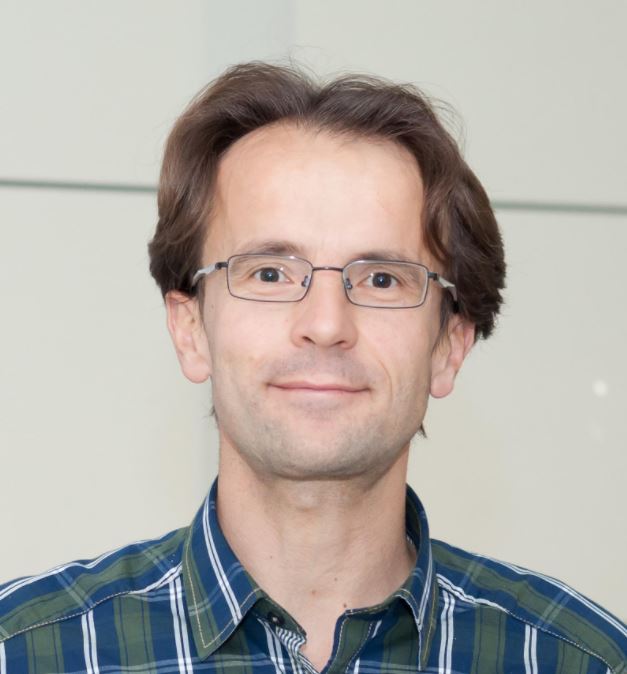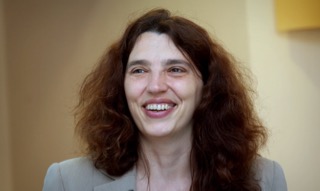Keynote & Plenary Talks
Data Analytics and the Digital Transformation in Manufacturing
 Dr. Thomas Natschläger
Dr. Thomas Natschläger
Abstract
Since many years there is the picture of data as the oil of the 21. century. However, looking at the spread of practical data mining applications or applications with integrated machine learning algorithms in the area of machine and plant engineering and construction it seems as if the oil boom has been missed by this industry. As there are many diverse optimization and prediction problems in developing and operating machines and plants there are plenty of opportunities to leverage the power of machine learning. In this talk we discuss practical, technical, methodological and organizational issues which my hinder the widespread of machine learning in manufacturing exemplified by successful applications.
Biography
Dr. Thomas Natschläger is scientific head of the “Data Analysis Systems” group at the Software Competence Center Hagenberg where his research is directed towards the advancement of methods for the analysis and modelling of complex and massive sensor data in its (industrial) application context. He studied Telematik at the University of Technology in Graz with a focus on theoretical informatics and machine learning. He got his PhD in 1999 at the same university in the area of computational neuroscience. From 1999 to 2003 he was with the Institute for Theoretical computer science (TU Graz) as an assistant professor where he did research and teaching in the areas of computational neuroscience, computational intelligence and machine learning and published over 40 scientific papers. Dr. Thomas Natschläger has international acknowledged expertise and proper international network of leading researchers in the area of neural networks (especially reservoir computing). He is also frequently working as a reviewer in this area for several journals.
Data integration for journalism: goals, tools, and architectures
 Dr. Ioana Manolescu
Dr. Ioana Manolescu
Abstract
Very soon after getting the first electronic databases, we wanted to get more of them, and digital Babel happened. Integration of data sources independently produced, into a single harmonious system, is an old goal which the scientific community keeps attacking from many angles. In recent years, I have considered the need for content management tools which could be used in newsrooms to give back to society the information we produce, own, and then ignore. The talk will explore paths toward making such a goal come true.
Biography
Ioana Manolescu is a senior researcher at Inria Saclay and Ecole Polytechnique. She is the lead of the CEDAR INRIA team focusing on rich data analytics at cloud scale. She is a member of the PVLDB Endowment Board of Trustees, of the ACM SIGMOD Jim Gray PhD dissertation committee, and an associate editor for PVLDB. Recently, she has been the program chair of the Scientific and Statistical Data Management Conference 2016, and she is a co-chair of the upcoming IEEE ICDE conference in 2018. She has co-authored more than 130 articles in international journals and conferences, and contributed recently to a book on "Web Data Management" by S. Abiteboul, I. Manolescu, P. Rigaux, M.-C. Rousset and P. Senellart. Her main research interests algebraic and storage optimizations for semistructured data and in particular data models for the Semantic Web, novel data models and languages for complex data management, data models and algorithms for fact-checking, and distributed architectures for complex large data.
How does Human Ageing affect Biometric Recognition ?
 Dr. Andreas Uhl
Dr. Andreas Uhl
Abstract
In many biometric systems the time of enrollment can be substantially separated from an actual authentication attempt (e.g., data as stored in e-passports remains valid for 10 years). Therefore, ageing might affect all parties involved in such an authentication process. While for some biometric modalities like face and speech such effects have been clearly demonstrated and techniques are established how to cope with these, the debate about these issues is quite controversial for iris and fingerprint recognition systems. We will discuss some recent results for iris and fingerprint template ageing and will show how to isolate certain reasons for observed time-span induced accuracy degradations.
Biography
Andreas Uhl is a professor for Computer Science at the University of Salzburg where he leads the Multimedia Signal Processing and Security Lab. His main research interests are in vision-based topics often closely related to security, e.g. multimedia security (e.g. visual data encryption, watermarking) and forensics, as well as biometrics. In the latter field he focuses on questions of biometric system robustness and security mainly considering the fingerprint, iris, and vein modalities. Besides conducting national projects, Andreas Uhl is currently involved in two biometrics-oriented Horizon 2020 projects, i.e. Pervasive and UseR Focused BiomeTrics BordEr ProjeCT (PROTECT) and Computer Vision Enabled Multimedia Forensics and People Identification (IDENTITY). In the academic field, Andreas Uhl was area chair for ocular biometrics @ International Conference on Biometrics (ICB'16) and is Program co-Chair of the annual International Conference of the Biometrics Special Interest Group (BIOSIG) since 2015.
